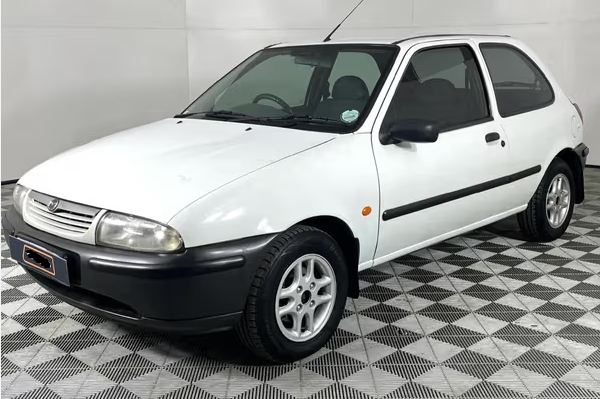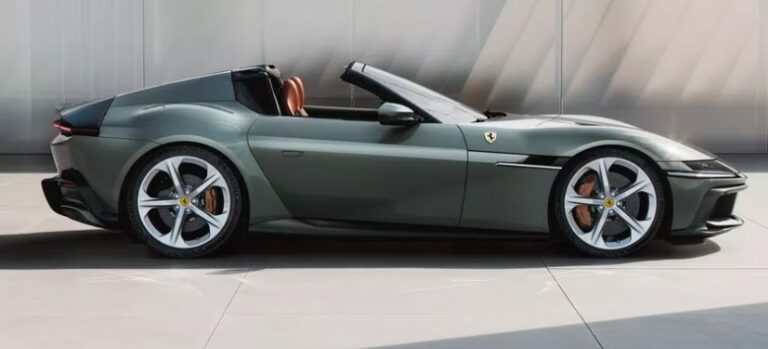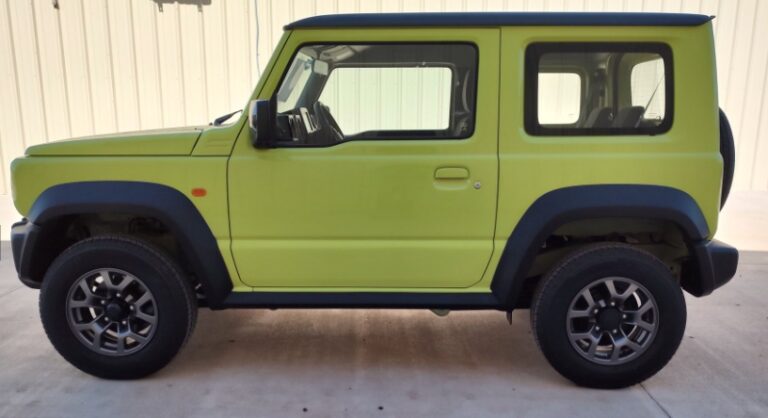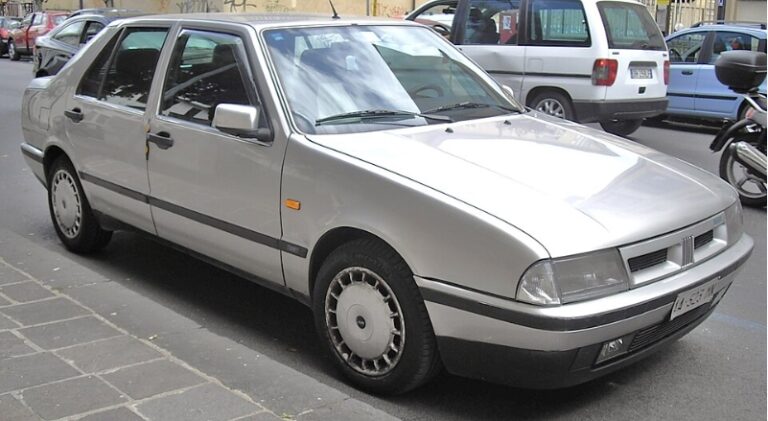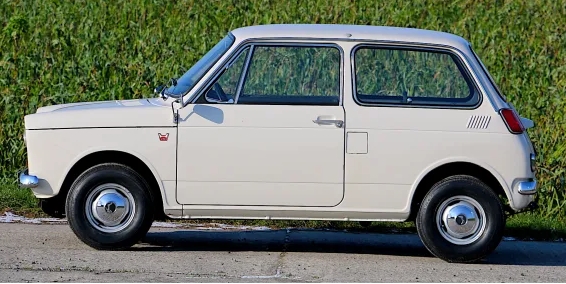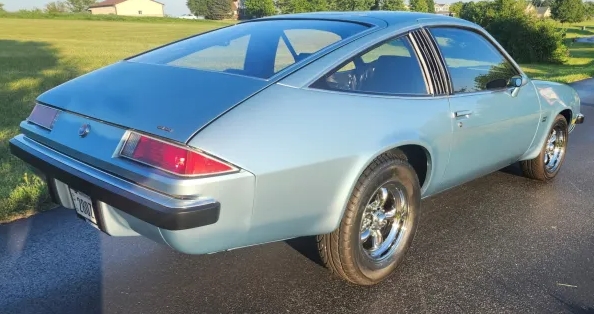Identity Crisis: Tracing the Chameleonic Evolution of the Mazda 121
In the vast annals of automotive history, few model names have led as schizophrenic a life as the Mazda 121. For most manufacturers, a nameplate like “Civic,” “Golf,” or “Corolla” represents a linear, traceable evolution—a clear family tree where each new generation builds upon the last. The Mazda 121, however, is the automotive equivalent of a character actor playing four wildly different roles. It was a stylish coupe, a pragmatic city car, a design icon, and finally, a rebadged European stalwart. To trace the history of the 121 is not to follow a single path, but to witness a series of complete reinventions that perfectly mirror the changing fortunes and philosophies of Mazda itself over three decades.
Generation 1: The Piston-Powered Cosmo (1975–1981)
The story of the 121 begins not as a humble subcompact, but as an alternative identity for one of Mazda’s most ambitious creations: the Cosmo. In the mid-1970s, Mazda was the world’s foremost champion of the Wankel rotary engine. The Mazda Cosmo AP (Anti-Pollution), launched in 1975, was a flagship personal luxury coupe, a technically advanced and stylish machine designed to take on the world’s best. It was offered with Mazda’s groundbreaking 12A and 13B rotary engines.
However, the 1973 oil crisis had sent crippling shockwaves through the automotive industry. The rotary engine, for all its smooth power delivery, had a notorious thirst for fuel. To broaden the Cosmo’s appeal in fuel-conscious export markets, Mazda made a pragmatic decision: they offered a version with a conventional piston engine. This car, known internally as the CD series, was christened the Mazda 121.
Produced from 1975 to 1981, this first-generation 121 was a far cry from what the name would later represent. It was available in two body styles: a sleek coupe and a more opulent “Landau” coupe, which featured a padded vinyl roof and an opera window, design cues heavily influenced by the American luxury market.
Models and Trim Levels (1975-1981):
Mazda 121 Coupe: The standard model, powered by a 1.8-litre (1,769 cc) SOHC inline-four piston engine. It offered a comfortable and well-appointed interior with features like velour upholstery, full instrumentation, and a level of fit and finish befitting its flagship status.
Mazda 121 Landau Coupe: This was the premium offering. Mechanically identical to the standard coupe, its distinction was purely stylistic. The Landau top gave it an air of formality and luxury that was popular at the time.
This 121 was a handsome, well-built car, but it was always the understudy to its rotary-powered Cosmo sibling. When the Cosmo line was updated in 1981, the 121 nameplate was retired, seemingly a footnote in Mazda’s history. It would lie dormant for five years before being resurrected for a completely different purpose.
Generation 2: The Practical Partner (DA; 1986–1991)
When the Mazda 121 returned in 1986, it was utterly unrecognizable. The luxurious, rear-wheel-drive coupe was gone. In its place was a small, front-wheel-drive, three-door or five-door hatchback built for economy and practicality. This transformation was the result of a strategic partnership between Mazda, Ford, and Kia.
This new 121 (platform code DA) was a truly global car. It was designed by Mazda, sold as the Ford Festiva in North America and Australia, and manufactured by Kia in South Korea, who also sold their version as the Kia Pride. It was the epitome of late-80s utilitarian design: boxy, efficient, and brilliantly packaged to maximize interior space within a tiny footprint.
Its most memorable and endearing feature, however, was an ingenious option that set it apart from its competitors.
Models and Trim Levels (1986-1991):
Mazda 121 L: The entry-level model. It was spartan but functional, equipped with a 1.1-litre B1 or 1.3-litre B3 engine, depending on the market. Features were basic, often with a four-speed manual transmission as standard.
Mazda 121 LX: A step-up in comfort, the LX typically added features like a five-speed manual transmission, a rear window wiper/washer, cloth-trimmed seats, and often a cassette player.
Mazda 121 “Canvas Top” / “Fun Top”: This was the standout model and a stroke of marketing genius. It featured a full-length, electrically operated sliding canvas roof that transformed the boxy hatchback into a quasi-convertible. It offered an open-air experience on a budget and gave the otherwise sensible 121 a huge injection of character and fun. This feature proved so popular it would become a signature element carried over to the next generation.
This version of the 121 was a sales success. It was reliable, cheap to run, and surprisingly spacious. It established the 121 nameplate in the public consciousness as a dependable and cheerful small car, completely erasing the memory of its luxurious coupe predecessor.
Generation 3: The “Bubble Car” Icon (DB; 1991–1998)
In the early 1990s, Mazda entered a period of bold, unrestrained creativity known as its “Bubble Era.” Flush with cash and ambition, the company launched a series of daring and distinctive designs, from the curvaceous MX-3 sports coupe to the advanced Eunos Cosmo. The third-generation Mazda 121, platform code DB, was perhaps the most radical product of this era.
Launched in 1991 and sold in Japan as the Autozam Revue, this new 121 was a small, four-door sedan that looked like nothing else on the road. It abandoned the sharp angles of its predecessor for a design language composed entirely of curves. With its high, rounded roofline, circular design motifs, and friendly face, it was quickly nicknamed the “Bubble Car,” the “Jellybean,” or the “Hat.”
Despite its diminutive exterior dimensions, the tall, rounded cabin provided astonishing interior space, particularly headroom. It was a masterpiece of “form follows function” thinking, where the unique shape directly contributed to its practicality. Mazda cleverly retained the popular canvas top option from the previous generation, adapting it to the new curved roofline.
Models and Trim Levels (1991-1998):
The trim levels varied significantly by market, but generally followed a clear hierarchy.
Base Models (often unnamed or L/LX): These were powered by a 1.3-litre (1,324 cc) B3 SOHC 16-valve engine. Standard equipment was minimal, often lacking power steering or air conditioning in entry specifications.
GLX / SE: The mid-to-high range trim. These models typically included power steering, central locking, electric windows, and better interior fabrics. They often featured the more powerful 1.5-litre B5 SOHC engine or, in some markets, a DOHC version of the 1.3-litre engine for peppier performance.
Canvas Top Models: As before, the full-length electric canvas roof was available on various trim levels, often marketed as a standalone model. It remained a highly desirable option that defined the car’s playful character.
Special Editions: Over its long production run, numerous special editions were offered, such as the “Shades” or “Kiwi” models in certain markets, which bundled popular features like air conditioning, unique wheel trims, and special paint colors.
Today, the DB “Bubble Car” is a bona fide cult classic. Its quirky, optimistic design stands in stark contrast to the aggressive styling of modern cars, and it enjoys a dedicated following of enthusiasts who appreciate its unique charm and clever packaging. It was the last 121 to be a pure, undiluted Mazda design.
Generation 4: The Ford Fiesta Alliance (DW/DY; 1996–2002)
By the mid-1990s, Mazda’s creative bubble had burst. The company was in serious financial trouble, and Ford Motor Company significantly increased its stake, eventually taking controlling interest. This new reality demanded a more conservative, cost-effective approach to product development. The era of quirky, bespoke designs was over.
The fourth and final iteration of the Mazda 121, launched in 1996, was a direct result of this new corporate structure. It was, for all intents and purposes, a rebadged Ford Fiesta. For a few years, it was even sold alongside the aging “Bubble Car” in some markets, creating a confusing overlap for consumers.
This generation can be split into two distinct phases:
Phase 1: Mark IV Fiesta (JASM/JBSM; 1996–1999) The first version was a rebadged Ford Fiesta Mark IV. The only visual differences were the Mazda grille, badges, and wheel trims. It was available as a three-door or five-door hatchback. While it lacked the unique character of its predecessor, it was a very competent car. The Fiesta platform was praised for its excellent handling and ride quality, giving the 121 a dynamic competence it had never possessed before. The engines were Ford’s excellent 1.25-litre and 1.4-litre Zetec-SE units.
Phase 2: Mark V Fiesta Facelift (2000–2002) When the Fiesta received a major facelift in late 1999, adopting Ford’s sharper “New Edge” design language, the Mazda 121 followed suit. Again, the changes were limited to badges and minor trim, but it kept the model looking fresh.
Models and Trim Levels (1996-2002):
The trim levels were largely aligned with their Ford Fiesta equivalents.
LXi: The base model, offering core features.
GXi: A higher specification, adding features like power steering and better interior appointments.
Soho / Select: These were often used for special edition models that bundled popular options like air conditioning, alloy wheels, and metallic paint at a value price point.
While a perfectly good car, this final 121 was a product of pragmatism, not passion. It was a symbol of Mazda’s loss of independence. In 2002, Mazda launched its own all-new global small car, the Mazda 2 (Demio), and the 121 nameplate was officially and permanently retired.
.

.
Conclusion: A Legacy of Reinvention
The Mazda 121 never had a singular identity. Instead, its four distinct generations serve as a fascinating historical record of a manufacturer in flux. It began as a piston-engined offshoot of a rotary flagship during an oil crisis. It was reborn as a sensible, globally-sourced hatchback in an era of partnerships. It then reached its creative zenith as a daring and unforgettable design icon during a period of corporate ambition. Finally, it ended its life as a sensible, badge-engineered product of financial necessity.
While it may not have the linear prestige of its contemporaries, the story of the Mazda 121 is arguably more compelling. It is a tale of adaptation, creativity, and compromise—a perfect microcosm of the turbulent and ever-changing automotive world.
